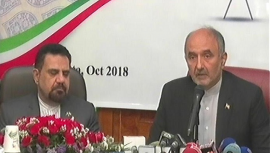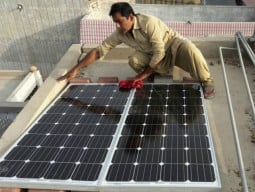
The recovery came in the backdrop of International Monetary Fund’s (IMF) announcement that it was sending a mission to Pakistan in the wake of Islamabad’s request for financial assistance.
Opponents of CPEC shall never succeed, says Chinese president
Apart from this, friendly countries like Saudi Arabia, China and Azerbaijan have offered Pakistan investment in China-Pakistan Economic Corridor (CPEC) projects, soft loans and credit line for oil imports.
The rupee touched an intra-day high of Rs131.50 during the day in the inter-bank market. More importantly, it never fell below the Thursday’s closing of Rs133.80.
The slight bounce back came following the rupee’s massive depreciation by 7.68% to Rs133.80 to the US dollar earlier this week, which was the fifth round of free fall since December 2017. Cumulatively, the rupee has lost around 25% of its value since December to date.
“The IMF’s confirmation that Pakistan has formally applied for a bailout has helped investors regain confidence in the rupee,” commented Rays Commodity Chief Operating Officer Adnan Agar while talking to The Express Tribune.
In addition to that, rumours were doing rounds in the market that China may provide another $1-2 billion for Pakistan in a bid to stabilise the dwindling foreign currency reserves, he said.
Earlier, China has formally welcomed Saudi Arabia as a new partner in the $60-billion CPEC programme. This means Riyadh will make a significant capital injection into CPEC projects.
Riyadh joining CPEC with Chinese assent: Fawad
Azerbaijan has also offered Pakistan a $100-million credit line for the import of petroleum products.
In the open market, the rupee recovered around half a percentage point to Rs132.40 to the greenback compared to Rs133 on Thursday.
A banker, who asked not to be named, described the rupee’s recovery as only temporary. In the current scenario, he said, it should settle somewhere between Rs135 and Rs140 by December-end.
“The IMF is expected to approve a loan package for Pakistan by mid-December,” he anticipated. Market talk suggests that the loan size could be anywhere between $6 and $12 billion.
Pakistan is in dire need of dollars to avoid a balance of payments crisis and make import and debt payments on time.
Pakistan’s foreign currency reserves dropped another $101 million to a critical level of $8.3 billion by October 5, 2018, the State Bank of Pakistan reported.
The IMF has urged Pakistan to let the rupee depreciate to Rs145 to the US dollar and increase the benchmark interest rate by 250 basis points from the current 8.5% to overcome the foreign payment crisis.
The central bank has already revised the benchmark interest rate up by 275 basis points to a 44-month high at 8.5% in the last nine months.
Analysts said the depreciation and interest rate hike were a must to pull down aggregate demand to overcome the balance of payments challenge and cool down the overheated economy. This would, however, slow down real economic growth of the country.
Besides, the IMF has asked the government to present complete details of its debt portfolio, including the one being accumulated through China’s investment under the China-Pakistan Economic Corridor (CPEC).
China is estimated to have invested around $15-20 billion so far in the past around three years out of planned investment of $60 billion.
Experts said CPEC had played a big role in the accumulation of fresh debt. Others said the debt-driven investment in infrastructure projects would pay back the country in the long run as such projects were a must to channel foreign investment into the national economy.
An expert suggested that Pakistan would need to arrange up to $20 billion instantly to avoid the foreign payment crisis.
The IMF is expected to offer a loan in the range of $6-12 billion while the rest of the required funds may be sought from friendly countries in the shape of investment and soft loans.
“Besides going to the IMF, Pakistan needs to increase exports and attract foreign direct investment to avoid the balance of payments crisis and bailouts in the future,” he said.
Published in The Express Tribune, October 13th, 2018.
Like Business on Facebook, follow @TribuneBiz on Twitter to stay informed and join in the conversation.


















1713904359-0/burn-(1)1713904359-0-270x192.webp)

























COMMENTS (1)
Comments are moderated and generally will be posted if they are on-topic and not abusive.
For more information, please see our Comments FAQ